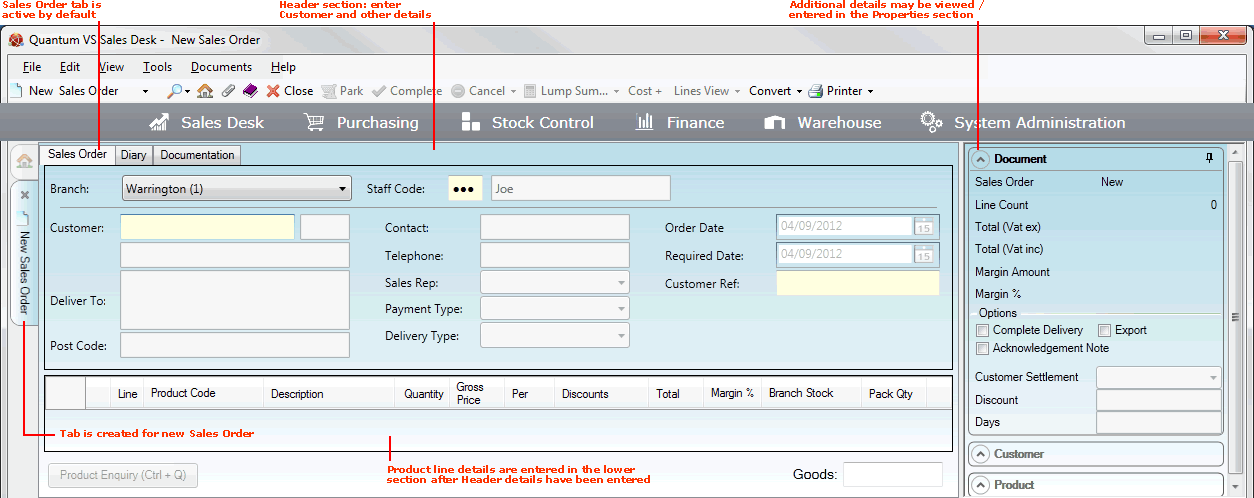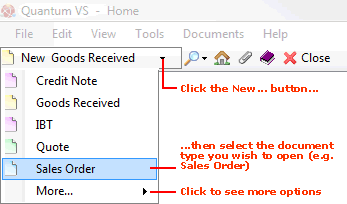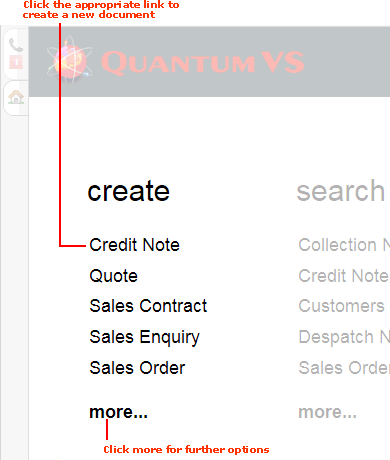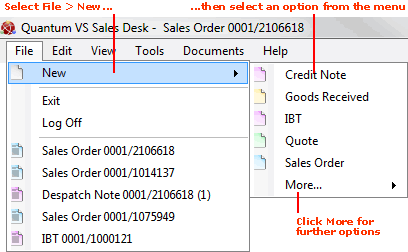Creating A New Sales Order
There are two ways of creating a new Sales Order. You can:
Note: When duplicating/converting an existing document as/to a Sales Order, the existing header/product line etc. details are retained, which you may edit as required.
To create a new Sales Order use one of the following methods:
Understanding The Sales Order
A blank Sales Order opens in a new tab - New Sales Order - on your desktop:

The main section now visible is the Header area, in which you will need to enter the Customer and other details. See Entering Sales Order Header Details.
Once you have entered Header details the Product Lines section is enabled, where you may enter the products the Customer requires. See Entering Product Line Details.
Note: The Properties section - to the right - displays additional details relating to the Document (i.e. Sales Order), Customer and Product - see Understanding The Properties Area. In the Document section there are fields you may wish to review/edit before Completing the Sales Order.
About The Tabs Within The Sales Order
Within the Sales Order are a series of tabs. The main tab - Sales Order - is active by default. Here you will add the Header and Line details.
Further tabs display at an appropriate point in the document's progress and provide additional options. This includes:
-
Diary
-
Notes
-
Supplier
-
Documentation
-
User Defined Fields
For details see Additional Sales Document Tabs.
The Tracking tab displays only when the Sales Order has been Completed. Click the Tracking tab to view documents associated with the current document, such as Picking Notes, Despatch Notes and Sales Invoices (see Picking, Delivery And Invoicing). Other document types may be listed, such as Purchase Orders, Credit Notes, Collection Notes, and more.
Entering Information On The New Sales Order
You must now:
NEXT: Entering Sales Order Header Details





